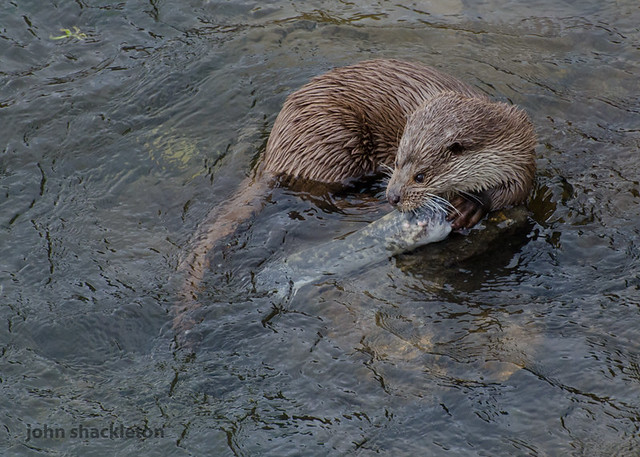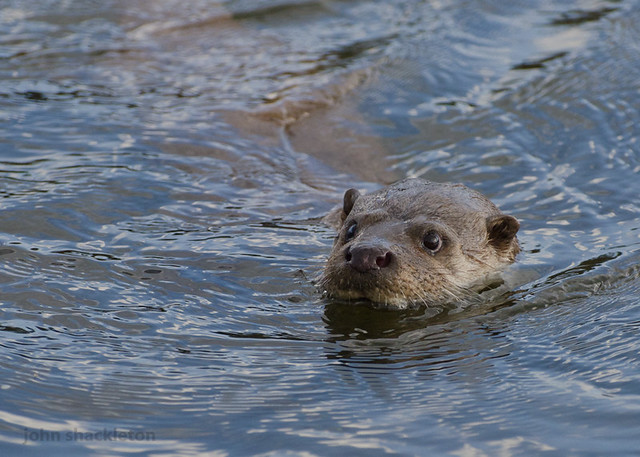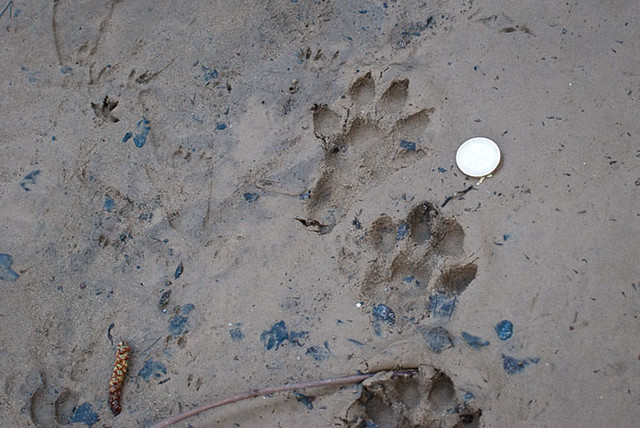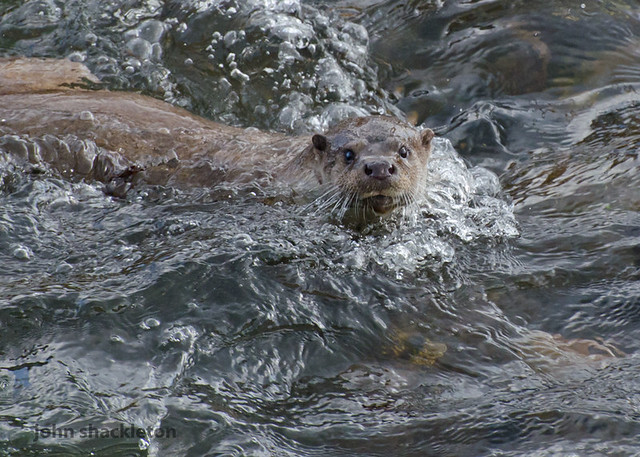Encounters with the otter in Asturias
A faint splash and a tail flicking from the water. An otter! After months of looking, this was our first Asturian otter and since that sighting 3 years ago it has become somewhat of an obsession.
Two rivers meet in the Asturian town of Arriondas. The fast flowing Río Sella born in the Picos de Europa mountains joins with the slightly calmer Río Piloña. Both are prime otter territories with trout and eels providing their staple diet. A solitary male otter can travel far, sometimes covering 20 kilometres, whilst the females (and young) tend to remain in one section of the river.
Otters are considered extremely shy, mainly nocturnal animals, so it has been a privilege to learn their routines and observe them so frequently during the daytime. Our sightings can range from the briefest of glimpses to a full-on otter watch, the record being for over 2 hours!
They appear accustomed to the background noise of human activity and also seem tolerant to a distance close enough to photograph with a long lens. However, spotting them on a foggy, dark morning can be difficult, especially as they tend to navigate the river swimming low and clinging to the bank. As we have often frustratingly discovered, if spooked, otters can vanish at will.

Otter eating a piece of lamprey.
An otter’s mind is dominated by hunting. Their relentless pursuit of food provides good watching opportunities. They can be totally fixated on the task in hand and luckily for us less distracted by people nearby. Our most thrilling encounter was an otter catching a lamprey, both species can be rare enough to see, let alone together. A lamprey is a scarce, jaw-less, eel-like fish and only able to survive in clean waters. We witnessed a male otter hunting a lamprey of 1.5m in length and it took a further 15 minutes to subdue its violent struggling. The fully grown lamprey is a large meal and the otters often cache pieces and eat them over several sittings.
As with all wild animals, the signs they leave behind often provide useful clues. During long torturous ‘no show’ periods, otter spraint (excrement) and tracks offer some comfort and help us learn about their routines, favourite places and diet.
Other wildlife that inhabits the river provide a welcome distraction to our daily walk. The ducks and moorhens can sometimes give us a heads up to an approaching otter, freezing like statues or fleeing in panic tends to be their strategy. Although duck is on the menu and they certain make attempts, I’ve not seen an otter successfully hunt one.
Kingfishers, dippers, wagtails, grey herons, little egrets, short-toed treecreepers, woodpeckers amongst others are also plentiful and them alone will make any walk worthwhile.
However, the sight of an otter remains the richest reward, always leaving us craving for more and in turn encourages you to look more closely and with luck encounter something new.




